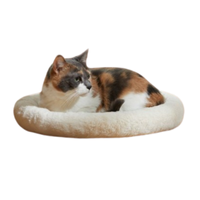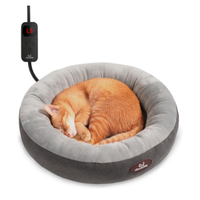Do cats get cold? How cold is too cold for cats in winter
Do cats get cold? We’ve revealed the answer, plus how to keep them warm through the winter.
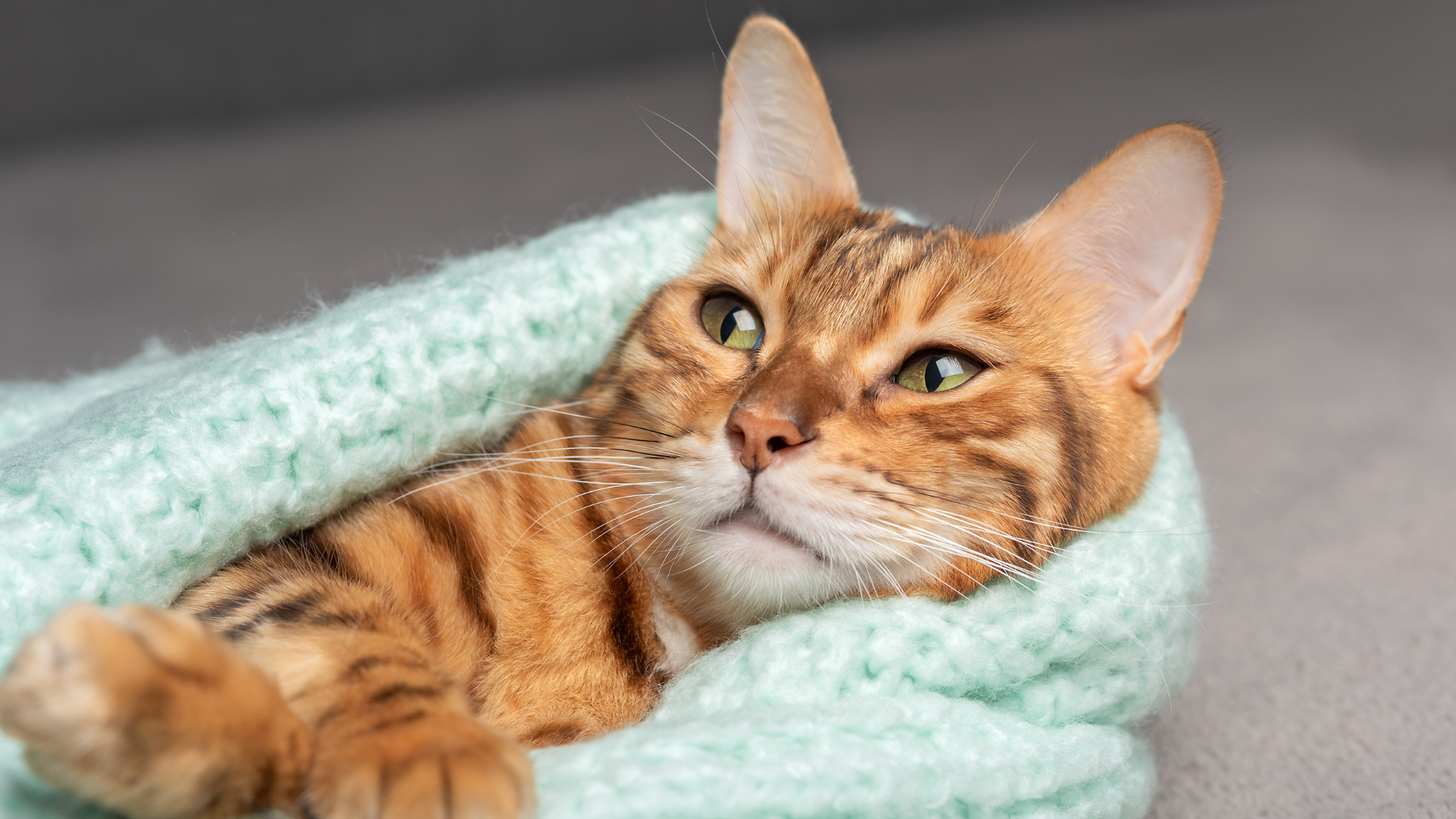
If you’ve got a feline friend, then you’ve probably questioned, ‘Do cats get cold?’ at some point in time. It’s no secret that cats love being warm and sunbathing in the summer, so how do they feel about the winter when the temperature drops?
Although cats can feel the cold just like us, vet Dr. Godfrey says they do well at keeping warm — especially if they have a thick fur coat. However, kittens find it harder to maintain their body heat and would benefit from the best heated pet beds to keep them at the right temperature.
Other factors like age, health, and coat type will determine how much your cat feels the cold. With the help of expert vets Dr. Godfrey and Dr. Woodnutt, we’ve explained the signs your feline is feeling chilly, the temperatures they like the best, and how to keep them warm in the winter.
Do cats get cold?
"Yes, cats do get cold," says Woodnutt. Their body temperature is naturally slightly higher than a human’s, and they’re descended from desert-dwellers, meaning they’re likely to feel the cold slightly more than we do."
The good news is that unless you have a hairless cat or a very short-haired breed, your fur baby’s warm coat will do a great job of insulating them against the cold if they spend most of their time indoors.
Outdoor cats are a bit of a different story because they’re at greater risk of hypothermia and frostbite if the temperature gets too low. Thankfully, outdoor cats are pretty good at knowing when it’s time to head back home.
That being said, it’s important you don’t leave your cat outdoors in the winter without providing them with one of the best outdoor cat houses as even cats with thick coats can be seriously at risk once the temperature starts to plummet if they don’t have access to warm shelter.
How cold is too cold for cats?
"As with humans, all cats will feel the temperature differently," explains Woodnutt. Some aren’t bothered by the cold (especially if they have a thick coat, like the Norwegian Forest Cat or Maine Coon) while others are likely to be a lot more sensitive (such as those adapted to warmer climates, like the Egyptian Mau or Siamese. While it’s hard to put a definite number on it, if you feel cold it’s likely your cat is chilly too. There’s a reason they gravitate towards sunny spots and warm laps!"
Temperature, coat type, and weight are all equally important to consider when it comes to how cold is too cold for your feline friend. Hairless cats and cats that have been shaved down or groomed in any fashion where their hair is cut beyond a minor trim should not be outside in cold weather. Hairless and very short-haired breeds struggle to regulate their body temperature, so even if they're indoors all day, wearing a sweater in the winter is advisable.
Obese cats have far more body fat which means they’re better insulated against the cold, but they do move slower than slimmer breeds, so that can cause problems if they’re prone to wandering far from home and get stuck in unexpected extreme weather. You'll also want to keep a close eye on your kitty if they suffer from any kind of medical condition as ill health can put them at greater risk of hypothermia if they’re outdoors.
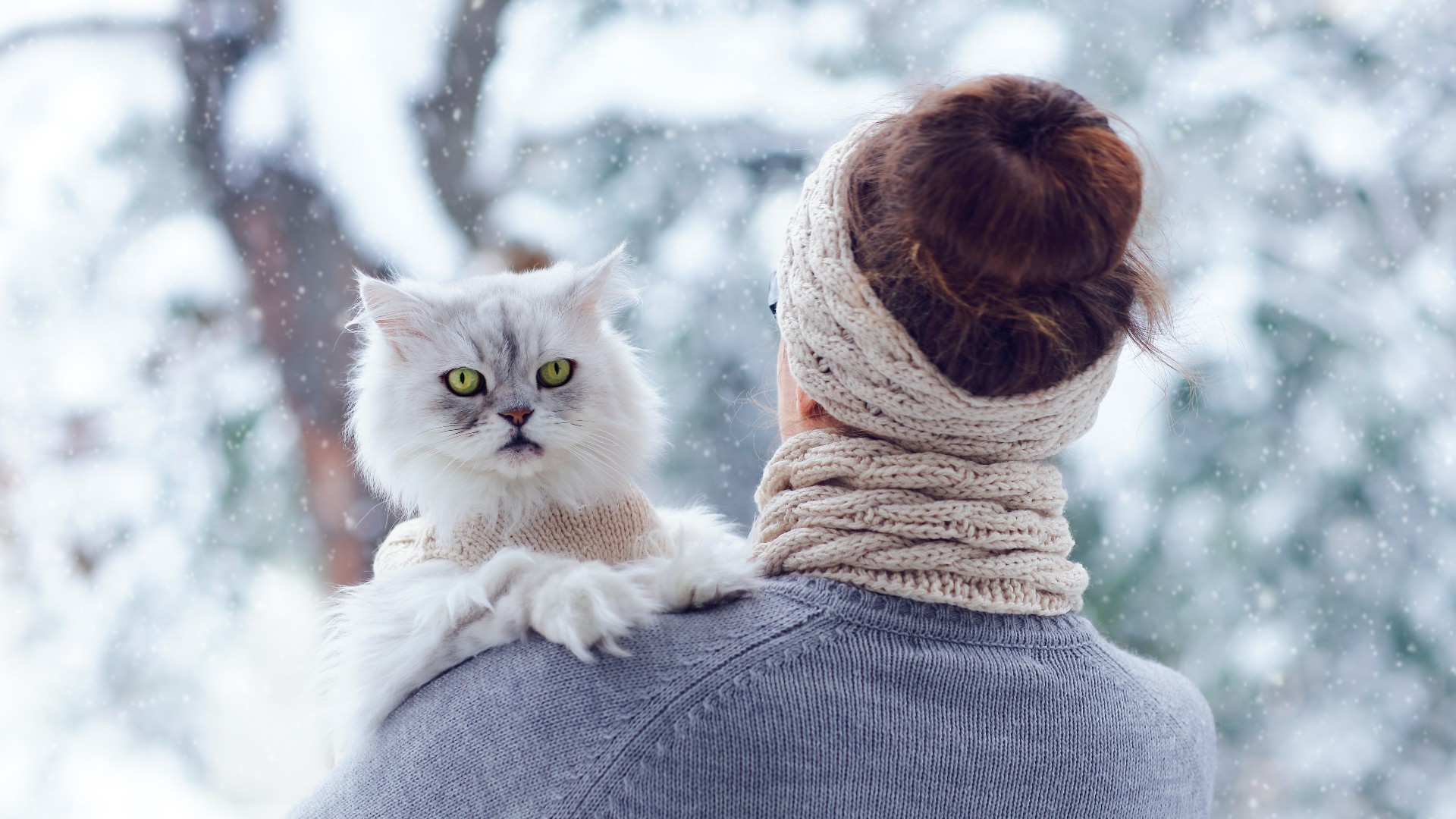
Signs your cat is feeling the cold
Unlike we humans, our feline friends can’t just go and pop on an extra layer when they get cold or tell us that they’d like the temperature on the thermostat moved up a few notches. So, with that in mind, here are some signs to look out for that will alert you to the fact that your kitty is feeling chilly.
1. Curling into a ball
This is a popular sleep position for cats, so it definitely doesn’t always mean your little one is feeling cold, but if they’re tightly curled up with their tail over their nose and all their paws tucked into their body, it’s a clue that they could be trying to preserve body heat.
2. Cold extremities
Just like we humans will get cold hands and feet, a cat's extremities will also show signs that they’re feeling chilly. Feel their ears, paws, and the tip of their tail, as this is where they lose body heat from first.
3. Hunching and puffing
We know, it sounds like some kind of new dance move, right? But cat’s who do what’s known as hunching (where they move closer to the ground) and puffing (where they puff up their fur) are likely feeling the cold.
4. Seeking out warm places
"If your cat is cold they’re likely to seek out warmer spots in the house," Woodnutt explains. "If you keep finding your cat sleeping in a drawer of blankets, in the airing cupboard, or pressed up against a radiator they’re probably too cold!"
Frisco Self-Warming Bolster Kitten Bed
This self-warming bed will keep your kitty warm all winter and it doesn’t have any wires for them to chew on. It’s made from soft faux fur that comes in three different colors and can be put in the washing machine when it needs cleaning.
Tips for keeping your cat warm
Wondering how you can keep your kitty warm in the cooler months? Here's a few of our favorite tips and tricks...
1. Play dress-up
Okay, so not every cat will thank you for this one, but if your kitty isn’t averse to wearing a sweater or coat, popping them in one can be a great way of ensuring they stay toasty. If your fur baby is skeptical, try positive reinforcement using the best cat treats.
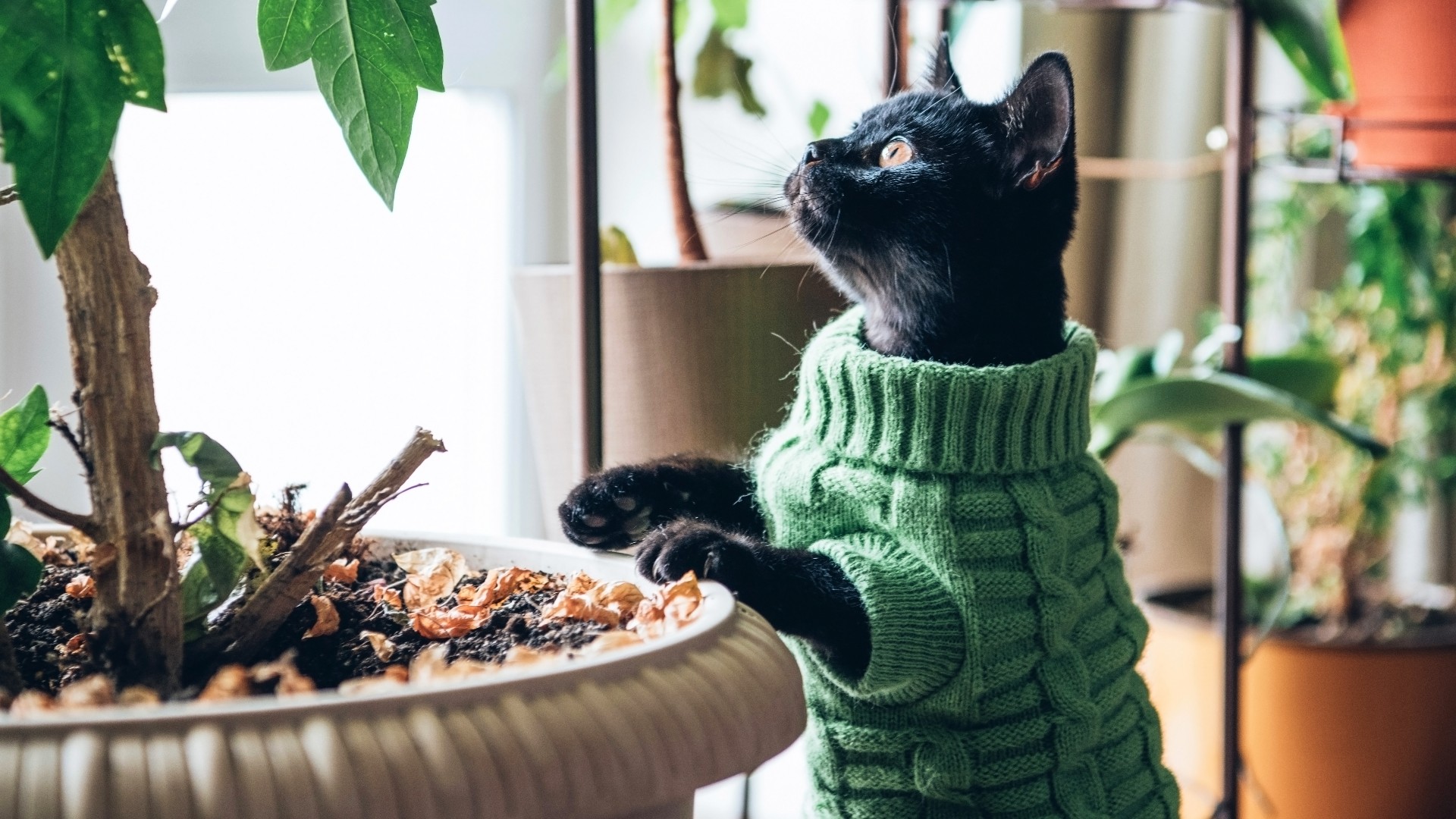
2. Try a self-warming or heated bed
The best cat beds include a great selection of self-warming designs that heat up without the need for electricity. These beds are typically made from an insulating blend of polyester that warms when it comes into contact with your cat’s body heat.
Another option is to try a heated pet bed. These use very low wattage, so they’re incredibly safe, and they're great for senior cats or those with mobility issues or joint pain as the warmth can help make them feel more comfortable.
Clawsable Heated Cat Bed
This donut-shaped cat bed is super snuggly and has a removable heating pad inside. You can adjust the temperature to six different levels and set a timer for how long it’s on for.
3. Elevate their bed
If your cat has a bed, it’s worth elevating it so that it’s off the ground. Because heat rises, a bed that’s placed on a chair instead of on the floor will feel much warmer to your cat.
4. Provide a cozy blanket
Investing in a snuggly blanket is sure to get you a huge paws up from your pal. Place it in their bed for extra warmth or on their favorite piece of furniture. You can also warm their blanket in the dryer for a few minutes before you put it down for them to burrow into.
5. Bring out the cat toys
A great way to stay warm together is to have a few of the best cat toys on hand that you can use to engage in a fun play session. Feather wands, catnip mice or laser toys are all high energy options that will have your kitty feeling toasty in no time.
6. Feed them a little more
When your fur baby has to work harder to regulate their body temperature, they naturally burn through more calories than they normally would. If you have some of the best cat food on hand, it can be worth giving them a little more to supplement the extra calories they’re using.
7. Leave the heating on
Those frequently increasing energy bills are no joke, but if you’re able to afford to leave the heating on when you’re out of the house, your kitty is sure to thank you for it. If not, the tips above will help your cat stay warm when the heating needs to be switched off.
What temperature should a house be for a cat and kitten?
Adult cats love feeling warm and their preferred temperature is 25°C (77°F), according to Dr. Godfrey. However, she explains that they’re comfortable anywhere from 15 to 20°C (59 to 68°F). As long as the temperature doesn’t drop below 7°C (44.6°F) consistently, there’s no need to worry.
However, if you have a kitten on your hands, you’ll want to keep their home at 25°C (77°F) and give them blankets and pet-safe heat sources to stay warm. Dr. Godfrey says that since they’re smaller and struggle to maintain their body heat, they need an extra helping hand.
Enjoyed this piece and looking for more great cat content? Then be sure to check out 'Can cats get a cold?' for more tips on how to keep your feline friend healthy this winter.

Dr. Joanna Woodnutt qualified as a vet from the University of Nottingham where she then went on to practice companion animal medicine in the Midlands. She really took to the consulting side of things and helping clients with medical problems such as dermatology, behavior and nutrition - anything that involved helping clients understand their pets better.

Hannah graduated from the Royal Veterinary College in 2011 and began work straight away at a busy mixed practice. Initially, she treated all species but focussed on small animals from 2014. She has a passion for soft tissue surgery, ultrasound, and canine and feline dentistry, having completed additional training in these areas.
PetsRadar Newsletter
Get the best advice, tips and top tech for your beloved Pets

Kathryn is a freelance writer who has been a member of the PetsRadar family since it launched in 2020. Highly experienced in her field, she's driven by a desire to provide pet parents with accurate, timely, and informative content that enables them to provide their fur friends with everything they need to thrive. Kathryn works closely with vets and trainers to ensure all articles offer the most up-to-date information across a range of pet-related fields, from insights into health and behavior issues to tips on products and training. When she’s not busy crafting the perfect sentence for her features, buying guides and news pieces, she can be found hanging out with her family (which includes one super sassy cat), drinking copious amounts of Jasmine tea and reading all the books.
